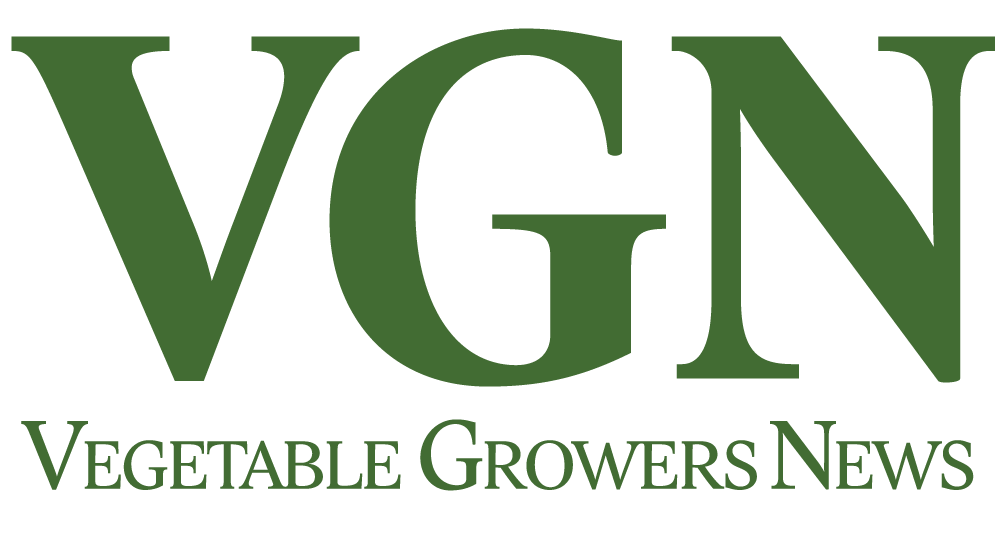Hydroponic system design: Adding a sanitation isolation reservoir
Incorporating a second reservoir into a recirculating irrigation system to serve as an isolation chamber offers flexible potential to a sanitation strategy. This idea is the result of accumulated observations spanning two decades of irrigation research.
The thought of a second reservoir started as a safe place to “nuke” return water. Blast the algae, biofilm bacteria and plant pathogens into the eighth realm. It sounded great, but it was quickly disqualified as being excessive, while dangling the question “What do we do with the residual?” I’ve since concluded that recirculating irrigation systems, particularly hydroponic setups, require less nuke and more nuance.
SANITATION CHALLENGES
Hydroponic growers often cite water use efficiency as a main benefit of their systems. Graduating from drain-to- waste to drain-to-reservoir reduces water consumption while increasing crop yield on a units-harvested-per-gallon-of- water-used basis.
Recirculating irrigation systems comes with new challenges. Many production practices are agnostic regarding whether the crop is food or flower. In this context, the discussion focuses on ornamental crops.
WHY ARE WE HERE?
Consider recirculating food crop systems as either substrate-based or hydroponics. Ebb and flow, also known as flood and drain, is the standard recirculating substrate- based system. Next, add other delivery techniques such as handheld hose, overhead sprinkler or drip tube that can be captured and returned to a reservoir for reuse. These comprise the substrate-based recirculating category.
The second category is recirculating hydroponics systems, with nutrient film technique (NFT) as the most common. Shallow and deep water (pond) culture, and some applications of flood and drain, comprise the main designs in this category. The difference between the two categories is the substrate.
ROOT ZONE
The first decade of this research focused on substrate- based systems and the second on hydroponics, which provides opportunities to compare and contrast. The obvious difference is the presence or absence of traditional soil or soilless substrate in the root zone.
Traditional substrates offer many benefits, especially buffering, which is a key difference between substrate and hydroponic systems. Irrigation water and substrate alkalinity apply pressure to substrate pH which affects crop performance. High alkalinity means high buffering that resists pH change. Low alkalinity means low buffering that results in less resistance to pH change. Buffering, by definition, means resistance to change — a synonym is cushion.
NAKED ROOTS
In traditional substrate-based culture, the substrate also buffers the root system in ways unrelated to pH. Think of it as a physical buffer rather than chemical, like wearing outdoor clothing to protect our bodies from winter’s harsh environment. In this sense, the substrate protects the roots from stress; it cushions them.
This non-pH buffering is a critical concept in managing hydroponic environments. An analogy is how climate change increases CO2 levels in ocean water, which raises pH. The slightest rise affects ocean life. Coral reefs have no protection, as there’s nothing buffering them from the water’s rising pH. We’re learning that land plants also deal with rising soil pH from climate change, but with more wiggle room because of the soil buffer. There’s that cushion again.
Labeled rates of several products that are safe and effective for traditional substrate-based crops are often phytotoxic to the same crop in a hydroponic setting.
A turning point for me was realizing that I need to think of buffering differently. Substrate root protection doesn’t exist in a hydroponic environment, it’s like the ocean. In hydroponics the roots are naked, there’s no clothing protecting them. Early data supported the conclusion that naked, unprotected roots in these systems are much more sensitive to any sanitizing agent than their counterparts surrounded by traditional substrates.
RESEARCH PATH
My current sanitation research with Pace 49 includes investigating its advanced generation quat molecule known as DDAC, trade name UpTake PRO. This multi-year project is focused on sanitation challenges associated with hydroponic systems.
The first experiment included treatments of continuous circulation of DDAC at substrate-based labeled rates. It established that continuous exposure was phytotoxic to lettuce grown in nutrient film channels. Following that experiment DDAC treatment was adjusted to reduce root exposure by delivering periodic pulses rather than continuous circulation.

DESIGN AND OPERATION
This was the first trial of the pulse treatment concept. To deliver periodic pulses of DDAC to the channels, a dual reservoir setup was constructed. The left reservoir contained the daily nutrient solution that circulated continuously except during pulse treatments, and the right contained the DDAC pulse solution.
Plumbing for the dual reservoir system shows three blue tubes: left and right tubes connect to pumps in each reservoir and connect to a common delivery manifold. Appropriately positioned valves provide easy access to either reservoir. Treatments included a ten minute pulse delivered daily, every other day or weekly to specific channels. The delivery manifold branches into three separate headers, each valved to allow the different pulse frequencies to be managed.
Since the DDAC and fertilizer solutions couldn’t mix, a return line directed to either reservoir or drained to waste was installed. The center blue tube is the return line exiting the tray, draining all channels. It was swung into the DDAC reservoir during pulse treatment circulation, swung to the nutrient reservoir during normal daily circulation, and swung to the open floor during a flush cycle immediately after pulse treatments.
MORE OPPORTUNITIES
How could a second reservoir offer sanitation benefits that a single reservoir cannot?
- The sanitizer solution is always available to the system, between and during crop cycles, without risk of overexposing crops. Sanitizer can be held in reserve at pulse concentration for in-crop treatment or shock concentration for between crop sanitizing.
- The sanitizer reservoir will be clean, with a bonus. Flipping the reservoirs during the crop cycle will keep both clean and can be as simple as valving the two pumps to allow for exchange.
- An option to install a new line to deliver sanitation solution directly to the return line at its farthest point. Bypassing the crop creates an opportunity to keep the return line clean without crop exposure. Think night time shock of the return line before morning resumption of daily nutrient solution circulation.
The concept of treating different legs of a hydroponic system during a crop cycle without exposing the crop’s sensitive roots is showing potential.
This article continues at sgaft.com with additional discussion, system diagrams, calculations and photos.









 Video Library
Video Library 


















